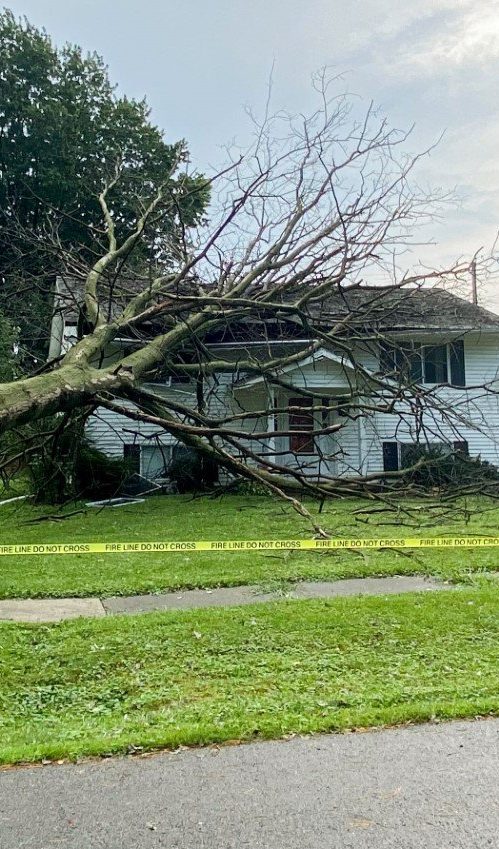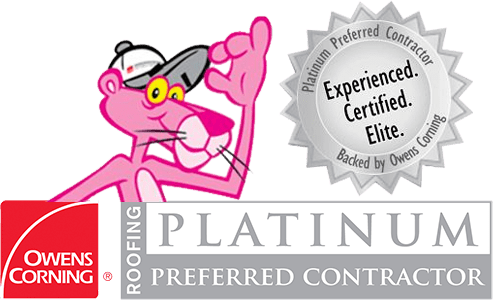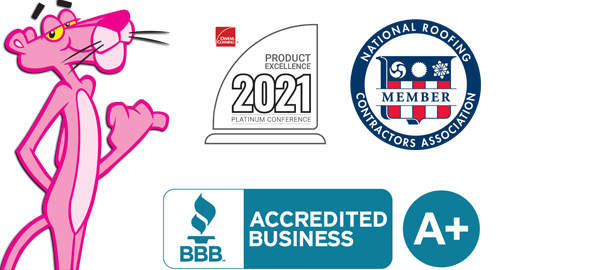Addressing the Issue of Sagging Roofs with TLC Roofing and Restoration
A sagging roof is always a worrying sight for homeowners. It raises questions about your home’s structural health and creates uncertainty about the necessary actions to address the situation. An inevitable and crucial question is, how urgently this must be fixed?
This post is diligently crafted to serve as a complete guide in understanding and dealing with a sagging roof, featuring expert insights from TLC Roofing and Restoration. We aim to provide more than just an analysis of the urgency of repairs. We dive into the potential risks of delaying these necessary fixes, explore the initial triggers for roof sagging, and share measures to help prevent such occurrences.
Our goal is to equip you, as a homeowner, with the requisite knowledge to tackle this issue confidently and effectively. We want to address the immediate fix and its subsequent long-term benefits, enabling you to minimize both the short and long-term impacts of sagging roofing problems.
Let’s navigate this challenge with TLC Roofing and Restoration by your side. Our extensive professional experience and dedication will provide the solutions that best fit your unique situation.
Understanding a Sagging Roof
In the most fundamental terms, a sagging roof is depicted by a conspicuous dip or a depression in the roof’s structure. This dip could appear anywhere along the roofline. Still, it’s most commonly visible along the ridge line (the roof’s peak where two slopes meet) or between the rafters (the wooden beams that rise diagonally from the edge to the height of the rooftop).
It’s an unmistakable visual cue that a structural problem exists. You can observe this anomaly from either inside or outside your home. From the inside, you may notice a downward curve in the ceiling or cracks in the drywall. From the outside, the surface of your roof may show a distinct curve or dip instead of a straight line.
Several factors can contribute to a roof sagging, whether it’s related to design, materials, or external elements:
- Inadequate Design: An improperly designed roof may not be capable of bearing the weight it’s intended to support. This can manifest as a sag over time. Specific roof designs, such as low-slope roofs or roofs with spanning decks, can be particularly susceptible to sagging.
- Improper Materials: If subpar materials were used during roof construction, they might fail to hold up over time, resulting in sagging. For instance, if undersized rafters were used or the roof sheathing (the layer covering the rafters) materials were unsuitable, it could gradually lead to a sag.
- External Factors: Weather elements can affect your roof’s durability. For instance, heavy snowfall can put excessive weight on the top, causing it to sag. Sustained water damage from leaks can weaken the structural materials in your roof, causing it to fade over time.
Acknowledging this problem right at its inception can prevent further complications and possible catastrophic outcomes. Hence, understanding the nature of the sagging roof is crucial to devising an effective repair and risk mitigation strategy.
Spotting a Sagging Roof: Signs, Indicators, and Concerns
A sagging roof isn’t a cosmetic issue to be brushed under the rug, and it isn’t a matter to postpone for a later date. The reason? It poses significant threats to your home’s overall structural integrity and safety, only escalating if left unchecked for extended periods.
When a roof sags, it’s a loud and apparent symptom of a deeper-rooted issue. It signals that the roof’s structural framework cannot distribute the load evenly across the supporting walls. Over time, it can even lead to the uneven settling of the house foundation, causing substantial and expensive damage.
If the sagging continues unattended, it begins spawning a cascade of other problems, such as:
- Leaky Roof: A sagging roof can create low points or ‘ponding areas,’ where water can accumulate during rains. This can lead to persistent water ingress, causing roof leaks, water damage to ceilings, and the potential growth of unhealthy mold.
- Damaged Shingles: The unnatural bend formed from sagging could damage the roof’s shingles, affecting their protective qualities. Damaged shingles can expose the roofing structure to moisture, insects, and other environmental elements, causing further deterioration.
- Roof Collapse: In extreme cases, if the structural deficiencies causing the sag are severe and remain unaddressed, the roof’s condition can worsen to partial or even total collapse. This poses a significant safety hazard to the residents.
Due to these reasons, as soon as a roof sag is identified, it’s paramount to address it. It isn’t merely a matter of house aesthetics or increasing your property’s longevity; it’s about ensuring the safety and well-being of everyone living in your home. Act quickly and decisively to safeguard your home from the escalating dangers of an untreated, sagging roof.
Common Causes of a Sagging Roof
A multitude of factors can influence the occurrence of a sagging roof. Understanding these varied reasons is critical for developing an accurate and tailored solution to remedy the situation. Let’s explore each of the potential causes in greater detail:
- Roof Material: The roofing material significantly impacts the roof’s ability to withstand the test of time. Heavy materials, such as slate, concrete, or clay tiles, may strain the roof structure substantially if the support framework isn’t sufficiently robust or designed for that specific weight. In such cases, a sag can develop over time, which could have been avoided with a better-suited choice of roofing material.
- Age: Like everything else, roofs are not immune to the effects of time. Over the years, the materials within the roofing structure may deteriorate or decay, leading to a loss of support and eventual sagging. The older a house, the greater the chances of encountering a sagging roof. Timely and proper maintenance, however, can delay the onset of such issues.
- Weather Damage: Mother Nature can be a formidable adversary for your roof. Hostile weather conditions, such as heavy snowfall, can accumulate excessive weight on your rooftop, straining its support system and causing it to sag. Similarly, relentless rain and winds can create weaknesses or exposures in the roof’s protective layers, making the roof more susceptible to sagging.
- Structural Damage: Damaged structural components within the roofing framework, such as rotten or broken beams or rafters, can induce a sagging roof. These problems could have arisen from previous termite infestations, moisture damage, or even human errors during construction.
By accurately identifying the underlying cause of your home’s sagging roof, ideally with the expert assessment services provided by TLC Roofing and Restoration, you lay a solid foundation for a potent and enduring solution. Further, gaining insights into these causes empowers you to sidestep similar issues in the future, thus helping you uphold the ideal roofing standards for your home’s utmost safety and aesthetics. TLC Roofing and Restoration is committed to providing thorough knowledge and tailored solutions, ensuring your home remains secure, comfortable, and visually pleasing.
Sagging Roof Repairs: From Simple Reinforcement to Structural Replacements
Once you determine the cause and severity of a sagging roof, the next step is identifying the best repair method to address the issue. The remedies can vary widely and depend primarily on how severe the sagging is and what caused it in the first place.
- Minor Sags — Reinforcement Approach: A simple reinforcement might suffice for minor sags where structural integrity isn’t heavily compromised. This process involves ‘sistering’ the existing rafters (attaching new rafters alongside the existing ones for extra strength) or installing further support from below. However, it’s important to note that this approach doesn’t eliminate the visible sag; it merely ensures that the sagging doesn’t progress further.
- Significant Sags or Structural Damage — Replacement Approach: If the sagging is pronounced or there is noticeable damage to the support structure, a more extensive repair method may be required. This could involve replacing sections of the roof, which commonly includes removing and replacing damaged roofing materials — rafters, decking, and roof covering. Given the complexity and the risks involved, this task should ideally be left to professional roofers.
In all cases, an accurate diagnosis of the issue is fundamental to successful repair. Determining the cause and degree of a sagging roof demands a certain level of experience and expertise, precisely what TLC Roofing and Restoration brings.
Should there be any uncertainty about a DIY attempt’s proper solution or safety considerations, it becomes critically important to engage experienced professionals like those at TLC Roofing and Restoration.
Their seasoned roofing experts, armed with specialized knowledge and committed to the highest safety standards, are adept at assessing thoroughly, devising the appropriate response, and resolving the issue efficiently. This ensures the selection of a proper remedy tailored to your roof’s unique condition and significantly minimizes the risk to personal safety during the repair process.
Preventing Future Sagging Roofs
Adopting preventative measures can significantly reduce future headaches and substantial costs associated with fixing a sagging roof. Regular maintenance and swift repairs to minor damages, coupled with thorough inspections after significant weather incidents, are crucial in minimizing the chances of roof sagging.
TLC Roofing and Restoration plays an essential role in these preventative measures. With services that go beyond simple fixes, this experienced team offers inspection services and preventive maintenance plans to help you take a proactive approach to roof health.
With TLC Roofing and Restoration, homeowners gain access to a comprehensive roof maintenance service. They provide routine inspections to identify and address potential issues before they escalate. The team is also skilled in promptly fixing any minor damages found, preventing them from triggering more extensive problems in the future. Moreover, they offer post-weather event assessment services, ensuring weather-related damage is detected and remedied immediately.
By partnering with TLC Roofing and Restoration, you’re not only acquiring a solution provider. You’re also gaining a preventative partner who can help you maintain the longevity of your roof, enhance your home’s aesthetic appeal, and ensure its ongoing safety by minimizing the risk of potential sagging in the future.
TLC Roofing and Restoration: Act Now to Secure Your Home from a Sagging Roof!
A sagging roof, when left unnoticed or unattended, has the potential to transform from a minor inconvenience to a substantial safety risk. Immediate action is essential to manage such issues maintaining the structural integrity of your home. With TLC Roofing and Restoration, you have an ally in this battle. Their expert services facilitate both immediate repairs of a sagging roof and provide preventive maintenance to avoid similar problems from arising in the future. Secure your home from unnecessary stresses and enhance your peace of mind – contact TLC Roofing and Restoration to keep your roof in top shape today.










